Review: Samsung Galaxy S5 for Verizon Wireless
Apr 21, 2014, 2:30 PM by Eric M. Zeman
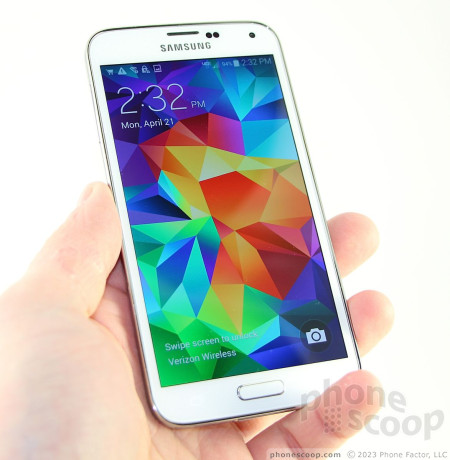
Verizon's version of the Samsung Galaxy S5 is fractionally different from the AT&T model in one key metric. Here is Phone Scoop's full report about this new Android smartphone.
Intro
The Samsung Galaxy S5 is the Korean company's main flagship device for the next year. Samsung said it took a "back to basics" approach in designing the GS5 and assigning it features. The device is certainly an improvement over the GS4, but it's hard to recommend rushing out to the store if you already have last year's phone. Who is it for? Well, if you just have to have the latest and greatest, if you're due for an upgrade, and, most importantly, if you have a two-year-old Galaxy S III, then this is the device for you.
Body
(NOTE: We've already reviewed a version of the Galaxy S5 on AT&T's network. We've carried over significant portions of the text from our initial review and changed it where appropriate to reflect performance on Verizon's network and Verizon's modifications.)
The Galaxy S hasn't changed all that much between 2012's S III and 2014's S5. Like Apple and its iPhones, Samsung treads carefully with its main money-maker and doesn't rock the boat year-over-year. It wants to be sure the new phone appeals to those who bought the old one. That's why the hardware evolution from the GSIII to the GS4 and GS5 is minimal. There are definite changes, but Samsung kept them low key so as not to scare anyone off.
The Samsung Galaxy Note 3 may be the classiest device in Samsung's current lineup, but the GS5 is only a small distance behind it. You might almost call it a Note 3 Mini. The phone uses a pleasing mix of glass, chrome-colored polycarbonate, and plastic to create the curves and surfaces. It is a clear step up from the dizzying number of mid-range models made by Samsung. The conservative color combinations (white, black, gray, chrome, etc.) are attractive in their own way. I like the way the chrome forms a rim around the front face of the device, and the patterned back panel is more appealing to me than the glossy plastics of previous models. Samsung has created a design language all its own, and that's fine.
The GS5 is a decent size, thanks to the generous display. It is wider than the HTC One, but shorter. The GS5 dwarfs the iPhone 5s and is appreciably bigger (taller and wider) than the Nexus 5. I found it mostly comfortable to hold, though the attractive chrome rim around the display also forms an irritating lip. The lip is meant to protect the screen, but it gives the front face a sharp edge that I dislike. The weight is fine, and despite the size increase the GS5 should still slip into most pockets easily.
The materials and build quality are the best-ever from Samsung. The cheap, slippery plastic back is gone, replaced by a golf-ball patterned back surface that feels much, much better to touch and hold. The phone is tightly assembled: All the seams are perfectly straight, and there's no bending or flexing of any parts. One of the GS5's whiz-bang features is protection from water and dust. This likely plays a role in its solid assembly. The GS5 carries an IP67 rating, which means it can keep water out for about 30 minutes in three feet of water (provided you firmly close the hatch covering the charge port) and it won't be bothered by blowing dust. I plunked the GS5 in a bowl of water, and sure enough the claim is true. It suffered no water damage despite spending some time in the bath. Samsung is smart enough to remind people to firmly close the battery cover, which includes gaskets meant to keep water from seeping into the internal components. This is vital. If the back cover is not properly snapped on, and the microUSB hatch not securely fastened, the GS5 is not waterproof. The GS5 is not rugged. If you drop it from chest height onto concrete, it's probably going to break.
Samsung kept the GS5's bezel to a minimum. The display consumes most of the front and it isn't surrounded by ungainly amounts of additional glass. It practically runs edge-to-edge. The Samsung logo is emblazoned above the screen in silver and often catches the light. There's a slit in the glass for the earpiece speaker, which is accented in chrome, as well as several sensors and the user-facing camera. Samsung didn't stray from its long-preferred button setup. There's a single physical key below the display. It's wide, rimmed in chrome, and easy to find thanks to its perfect profile. The home button's travel and feedback is excellent. This button also doubles as a fingerprint reader (more on that later.) There's a capacitive Menu button on the left and a capacitive Back button on the right. These two buttons functioned without issue, and can be set to vibrate or not depending on your preferences.
The volume toggle is positioned on the left edge of the phone. It is a short, thin strip that protrudes nicely from the side. It's no trouble to locate, and the travel/feedback are quite good. The same is true of the screen lock button, which is on the right edge. There's no dedicated camera button, which is a shame. The stereo headphone jack is on top and the micro-USB port is on the bottom. The GS5 has a USB 3.0 port that supports both the larger, faster USB 3.0 SuperSpeed connectors and the regular old micro-USB connectors you're probably used to. For some reason the device ships with a USB cable with the smaller, slower connector. The hatch protecting it requires just a bit of effort to open and close thanks to the gasket.
The GS5's camera module is larger than in years past and has a noticeable hump. There is a separate module below the camera in a rather deep depression. This module holds the flash and heart rate monitor (more on that later). There are a couple of slits in the plastic back panel near the bottom for the speakerphone. It's not too much trouble to remove the battery cover. The battery itself is removable, but of course it's a different size/shape than last year's battery. The SIM card and microSD memory card slots are stacked with the memory card on top. Memory cards can be removed without pulling the battery, but the battery has to be pulled in order to retrieve the SIM card. You need to be extra careful when reinstalling the back cover. Make sure all the clips are snapped in place in order to ensure the GS5 is resistant to water.
In sum, the Galaxy S5 represents the pinnacle of hardware design from Samsung, such as it is.
Comments
No dedicated Menu button.
the only thing about having that recent apps function before as pressing and holding home button is that a lot of people didnt know about it, now they do and ...
(continues)


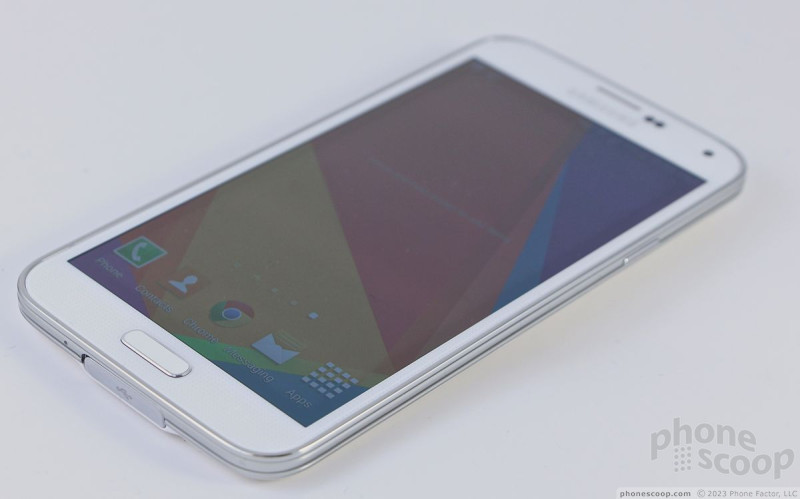


















 Review: Samsung Galaxy S5 Sport for Sprint
Review: Samsung Galaxy S5 Sport for Sprint
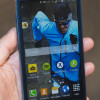 Hands On with Samsung's Galaxy S5 Sport for Sprint
Hands On with Samsung's Galaxy S5 Sport for Sprint
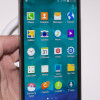 Hands-On: Samsung Galaxy S5
Hands-On: Samsung Galaxy S5
 Verizon Begins Updating Samsung Galaxy S5 to Lollipop
Verizon Begins Updating Samsung Galaxy S5 to Lollipop
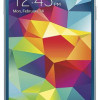 Best Buy Scores Electric Blue Galaxy S5
Best Buy Scores Electric Blue Galaxy S5
 Samsung Galaxy S5 (CDMA) / Galaxy S5 Sport
Samsung Galaxy S5 (CDMA) / Galaxy S5 Sport




